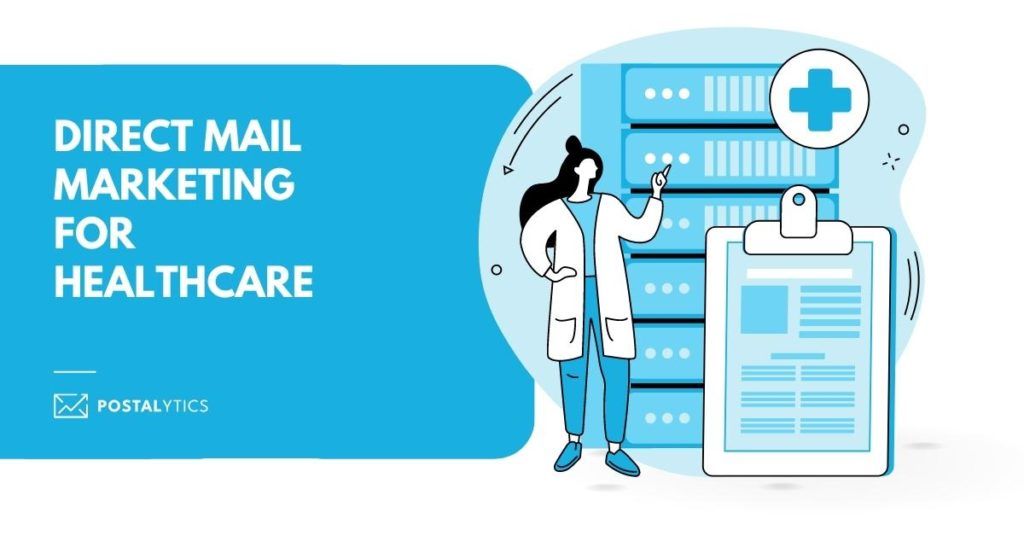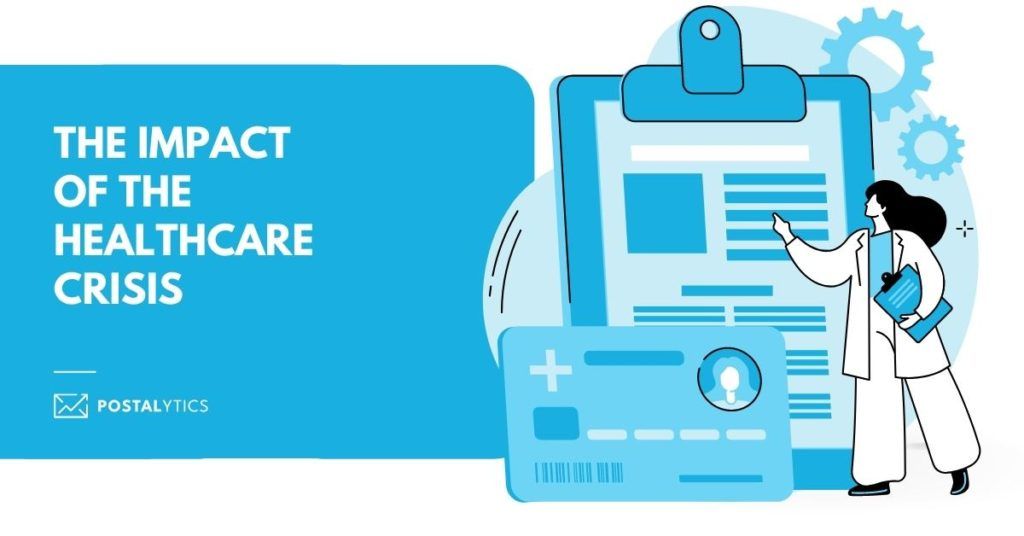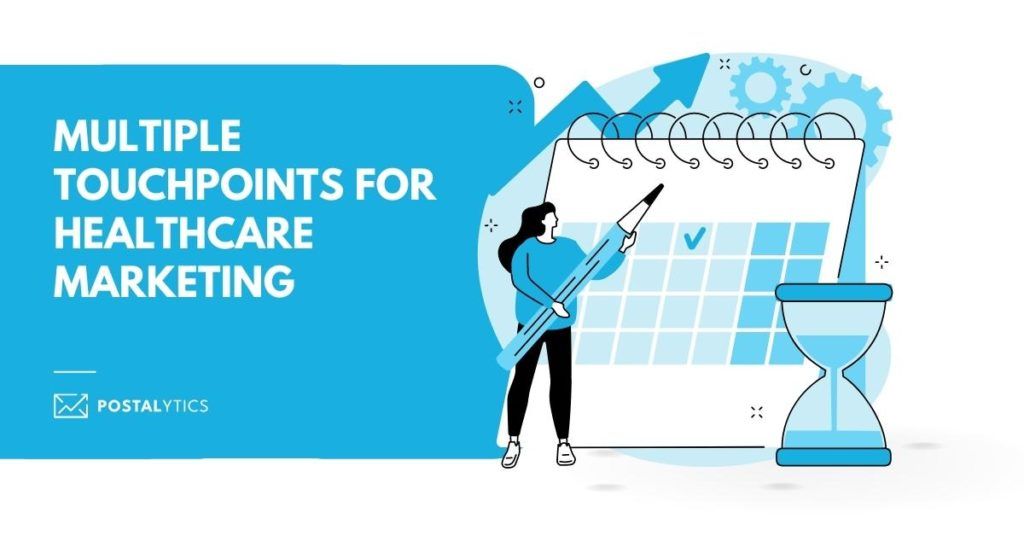
Amid “digital noise,” print has made a comeback in America’s mailboxes, and it’s working for healthcare companies”
As the first direct mail automation company, we understand that healthcare companies need to stay on top of the latest marketing trends in the healthcare industry.
While not new, email marketing clutter and “digital noise” are rapidly becoming too distracting for everyday consumers. Though the digital message volumes may be rising, electronic marketing’s effectiveness is waning. Here’s an interesting tidbit of generational information from the eMarketing Association (EMA): Millennials are twice as likely as Baby Boomers to use online ad blockers to cut down on the distractions they encounter online. Distributing high volumes of content to people actively attempting to avoid seeing it isn’t the best strategy to pursue.
Before the COVID-19 pandemic, the vast majority of marketers had already recognized the negative impact of too many digital ads and increased their use of printed direct mail. In the onslaught of digital messaging that occurred during the pandemic, even more, companies turned to direct mail as the best way to communicate with their customers and prospects.
Why? Because printed mail stands out. The average household receives two pieces of direct mail per day compared to 157 emails, according to U.S. Postal Service statistics. Need more proof that mail works? In 2019, the USPS reported sending over 75 billion pieces of marketing mail through its system. Marketers wouldn’t be spending money on direct mail marketing if it wasn’t working for them. Healthcare companies that have not taken advantage of direct mail are missing an opportunity to connect with their audiences in a way that can’t be accomplished with digital approaches.
Table of contents
The Impact of the Healthcare Crisis

When people were literally stuck at home during the pandemic-related lockdowns, direct mail became even more essential to marketing efforts. Some healthcare companies were quick to recognize the opportunities as new trends formed. If they had direct mail arrangements already in place, they simply shifted more of their attention to postal mail. But if they hadn’t used direct mail before and attempted to initiate new campaigns using a traditional print shop, they found it was more involved than they thought and were consequently late to the game.
“We had captive audience members who were looking forward to going to their mailboxes every day,” points out Daniel Dejan, principal/creative director at Tennessee-based Dejan Associates and a self-proclaimed lover of paper and print. Still, he considers 2020-21 a lost opportunity because “I wish more marketers had taken advantage of direct mail.”
Awareness of solutions like Postalytics would have helped more healthcare companies execute timely direct mail campaigns. Postalytics takes care of all the printing and mailing details. From a business user’s viewpoint, a Postalytics direct mail campaign is as easy to execute as an outbound email blast. It’s uncomplicated to get started and inexpensive to execute.
“Unfortunately, advertising and marketing are usually among the first budgets cut during tough, lean times,” Dejan acknowledges. “But the paradox of that way of thinking is that if people do not know that you’re still around, the assumption is that you’re not,” he warns. This was especially relevant during the pandemic that forced many healthcare businesses to change operating procedures or alter business hours. They needed to inform people about the changes and assure them they were still open for business.
Direct mail out-performs all digital channels combined by some 600%, according to the Direct Marketing Association. The Canada Post goes further, proclaiming that direct mail’s motivation response is 20% higher than digital media — “making it a more persuasive platform,” states additional research garnered by California firm Modern Postcard. “Direct mail requires 21% less cognitive effort to process than digital media sources,” the Post adds.
Direct Mail Marketing for Healthcare
From walk-in “minute” clinics and weight-loss programs to providers of dental, smoking-cessation, hearing-aid, fitness, and counseling services — all are ideal candidates to leverage direct mail’s power. Healthcare professionals can use Postalytics’ postcards and letters to promote their businesses to target audiences. Clearly, the healthcare sector comprises not only hospitals, medical doctors, pharmaceutical manufacturers, and insurance companies. But for all healthcare companies, awareness of governmental regulatory concerns is of utmost importance.
“People often don’t appreciate all the legal regulations involved in healthcare marketing,” Dejan observes. For example, how is transparency defined by agencies such as the U.S. Food and Drug Administration and the World Health Organization? Truth-in-advertising laws can make campaign strategy and development particularly challenging for creatives and marketing teams: What can we say, or what can’t we say? Do we have to say it with a footnote?“ And, don’t forget all those [drug] side effects we hear on TV commercials,” he adds, “which can be cumbersome in print.”
Curt Schultz, a veteran graphic designer and creative director at Paul Gregory Media outside of Chicago, shares a true story about a pharma firm forced to redo an entire campaign for a drug it was marketing to adults. The background of a photograph includes the image of a child. “Regulators want the demographic audience pinpointed, so there is no consumer confusion,” he explains.
Schultz adds that for hospital and insurance marketers, the Health Insurance Portability and Accountability Act (HIPAA) comes into play. Dating back to 1996, the privacy rule protects all “individually identifiable health information” held or transmitted by a covered entity or its business associates. The law covers any form or media, whether electronic, paper, or oral/verbal.
Over 90% of consumers surveyed say they are more likely to trust companies with their personal information if they explain how collecting and using the data will deliver a better experience, according to ANA. Furthermore, nearly 80% of consumers are more likely to do business with a company that offers personalized experiences, which is where segmented customer databases and Postalytics’ variable-data printing capabilities come into play.
To expand the volume of regulated or promotional content beyond the space available on a direct mail piece, marketers have turned to QR codes. Quick Response (QR) codes are a technology whose popularity was boosted by COVID-19. Consumers became more aware of how they work. They began scanning with their mobile devices to order food from menus or arrange for curbside grocery pickup during a time when minimal personal contact was the norm. A QR code can direct customers to detailed information, disclaimers, videos, appointment-setting websites, and more simply by scanning the code with a smartphone or tablet. Postalytics has QR code functionality and tracking built into the platform, making it easy to add them to direct mail postcards and letters.
Multiple Touchpoints for Healthcare Marketing

Direct mail alone cannot achieve the results that most marketers demand. Research conducted by Postalytics has found that 72% of consumers prefer to connect with brands through multiple channels before making a purchase. When print and digital play nicely together in an integrated fashion, the synergistic “punch” they jointly deliver can be difficult to beat. Lately, printed direct mail has benefited from the increase in electronic advertising, contends Schultz. “Overall, the amount of printing is still down substantially from where it was, say, 15 or even 10 years ago,” he explains, “but direct-mail print volumes have probably doubled since 2017.”
Technology altered the marketing and advertising landscape, of course: “Think about how online and social [media] elements have evolved,” Schultz says. And in much the same way, high-tech software automation from Postalytics is the key to making the two mediums work together effectively in 2022 and 2023. The lure of social media platforms such as Facebook, Instagram, and Twitter is that “they’re cheaper and seemingly more measurable than print,” he notes.
NOTE: Postalytics provides a great deal of status and tracking data for the postal mail sent through their platform. Customers can identify undeliverable mail, track mail pieces as they travel to the recipients, and gauge customer response through QR codes and personal URLs.
Dejan concurs. “I’m a print guy, but print costs money,” he says. “You buy it by the square inch, and text-heavy healthcare legalese and disclaimers aren’t necessarily a good fit [in print]. That’s the beauty of an omnichannel world. You can capture attention in print with an engaging, relevant, and timely message that showcases features and benefits; then direct them to your website for details and more information.”
For instance, online, there are no column width or page count limitations if healthcare marketers wish to share:
- Detailed charts and graphs
- Clinical studies
- Before-and-after photos
- Customer testimonials
Marketers can easily link the postal mail piece to the digital content, allowing them to design clean, easily understood and actionable messages and images on their postcards and letters.
“Marketing is all about engagement,” Schultz concludes. What is your call to action, he asks? “Are you trying to get people to pick up their phones and call a phone number to schedule an appointment? Or do you want them to go to your website for more info?” Whichever it is, printed direct mail campaigns can work in tandem with electronic media and help to achieve the coveted response outcomes that so many healthcare firms chase.
Attracting the attention of future patrons for the healthcare business is a tough assignment using digital marketing channels alone. A coordinated effort that includes direct mail made easy by platforms like Postalytics is the key to success.
About the Author

Dennis Kelly
Dennis Kelly is CEO and co-founder of Postalytics. Dennis joined Boingnet, the predecessor to Postalytics, in 2013. Boingnet was focused on providing print and direct mail marketing service providers the ability to add digital marketing channels to their direct mail campaigns. Postalytics is Dennis’ 6th startup. He has been involved in starting and growing early-stage technology ventures for over 30 years and has held senior management roles at a diverse set of large technology firms including Computer Associates, Palm Inc. and Achieve Healthcare Information Systems.
